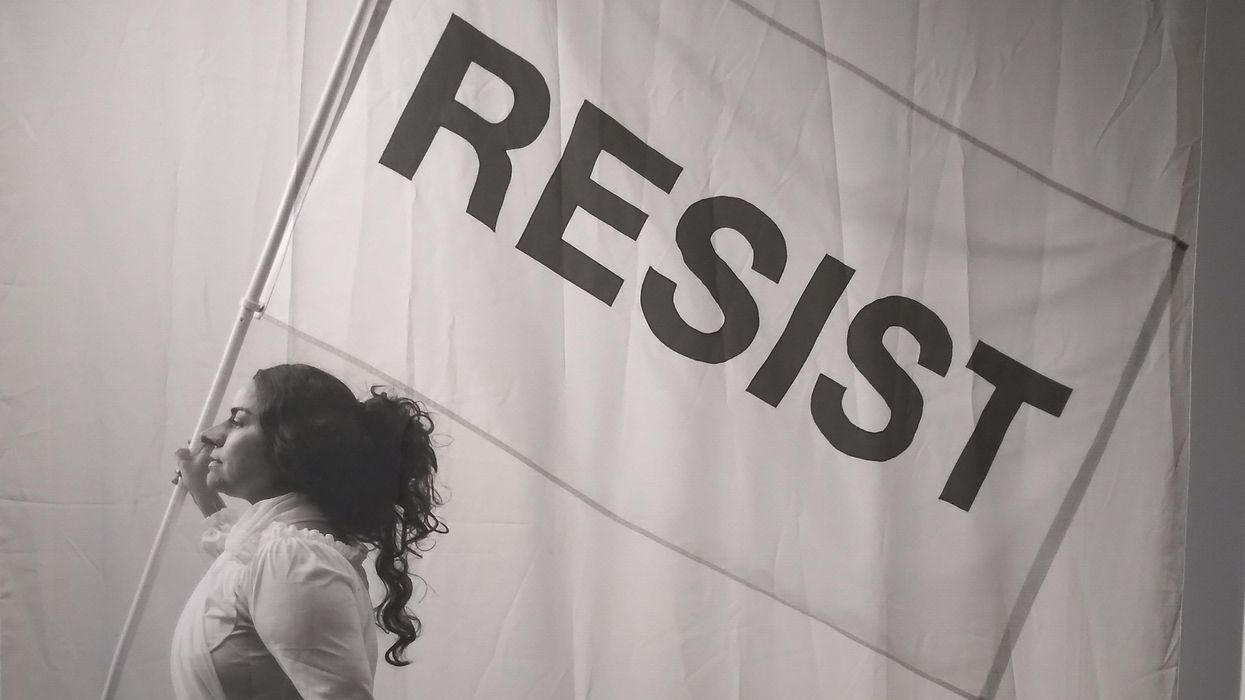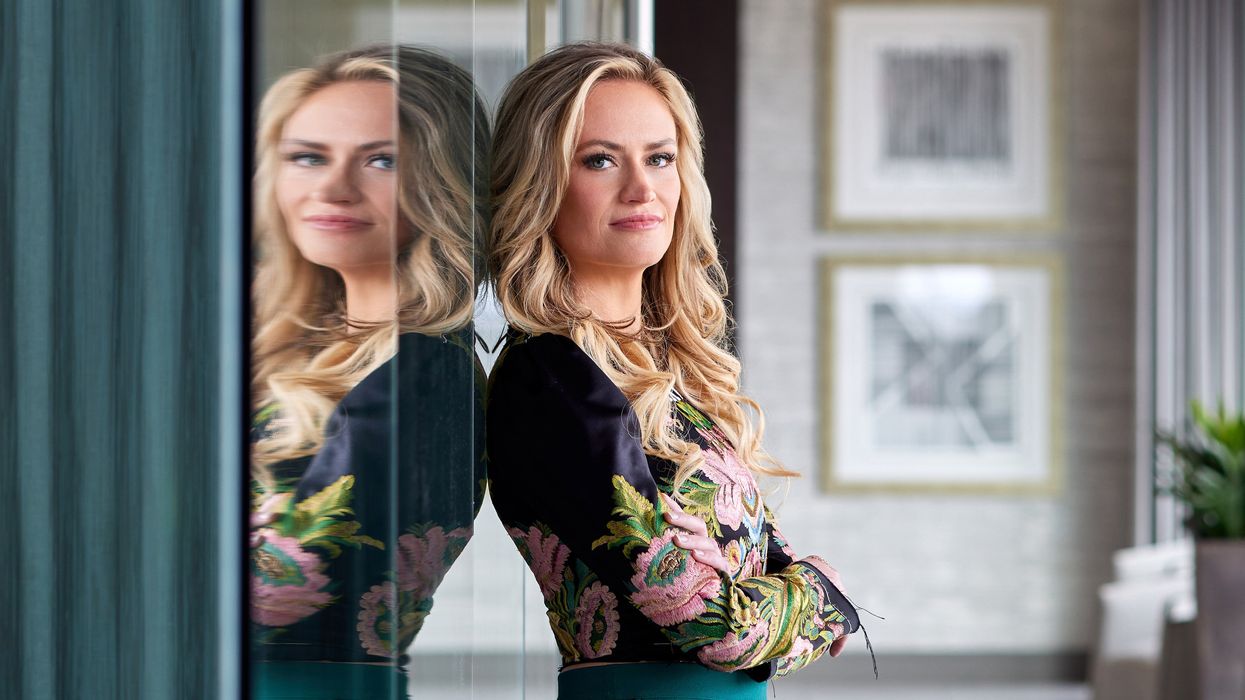
A detail of 'Resist' by Mari Hernandez (photo by Chris Becker)
ON VIEW THROUGH Jan. 21 at the Houston Museum of African American Culture is Negative Women: Four Photographers Questioning Boundaries, a thought-provoking exhibit of photographs, video and mixed media installed on both floors of the museum.
Curated by HMAAC’s Chief Curator Christopher Blay, Negative Women brings together the works of four Texas artists: Ciara Elle Bryant, Jordanian-born Tanya Habjouqa, Mari Hernandez, and Letitia Huckaby, who was recently honored by the Art League of Houston as Texas Artist of the Year. The title of the exhibition refers to both a “negative” photograph, in which the light and darks are completely inverted, and “negative” as it is used pejoratively towards women who dare to challenge the accepted patriarchy of our culture and the museum world. (“Oh, you’re just being negative!”)
Upon entering the museum, with light on a sunny day pouring in from the upper level, you might overlook the darkened gallery to your left where Huckaby’s photographs are on display. For this series, Huckaby traveled to Mobile, Ala., to photograph the historic community of Africatown, where in 2019, the wreckage of the slave ship Clotilda was discovered deep below the surface of the nearby Mobile River. Huckaby’s photos of overgrown foliage, broken sculpture, and churning water, with titles taken from African American spirituals (“Amazing Grace,” “Wade in the Water”), are beautiful, but eerie, even as they pay tribute to Africatown’s residents, some of whom are descendants of those who survived the journey on the Clotilda.
Meanwhile, in a separate, even darker gallery at ground level is Bryant’s mixed-media installation “Black Shines Like Gold,” an assemblage of projected and mounted images the artist has mined from the impersonal, algorithmic experience of online surfing to create meditative and devotional space.
 Letitia Huckaby's 'Cudjo Lewis Bust,' pigment print on fabric
Letitia Huckaby's 'Cudjo Lewis Bust,' pigment print on fabric

'Untitled,' by Tanya Habjouqa

'Pitted Brother Against Brother' by Mari Hernandez
Climb the stairs to the second floor, and you’re greeted by an oversize, inkjet print on silk-like fabric of Hernandez marching in profile, dressed in a late 19th-century-styled long-sleeved blouse and skirt, holding a flag emblazoned with the word “RESIST” in all caps. The antiquated look of the photo makes you wonder if it was lifted from a dusty archive, but look again, and you see Hernandez is wearing a prosthetic nose, an accoutrement of the archetypical trickster, and perhaps a warning to the viewer to resist complacency and question dominant and often inaccurate historical narratives.
Several more photos-on-fabric of Hernandez in historical costumes and wearing other various facial prosthetics are suspended around the parameter of the gallery, like banners of a nomadic tribe, and surround an enclosed area constructed for Habjouqua’s “Afro-Palestinians.” The installation combines embedded reportage with a theatrical, performative approach to photography to explore the lives of “a persecuted community within a persecuted community.” One of the first things that compels your eyes and ears is a looping video of students at the African Community Society in the Old City of Jerusalem learning Afro-Dabke, a hybrid-style of celebratory dancing, where the dancers hold hands and stamp their feet. A placard explains one of the girls in the video had just seen her older brother arrested by Israeli forces, giving the movement captured fleetingly on camera a layer of unexpected poignancy. It’s another example of several small but significant historical details each artist in Negative Women is giving due attention to with the hope that change can come, as Gloria Steinem recently said, “from the bottom up, like a tree.”
